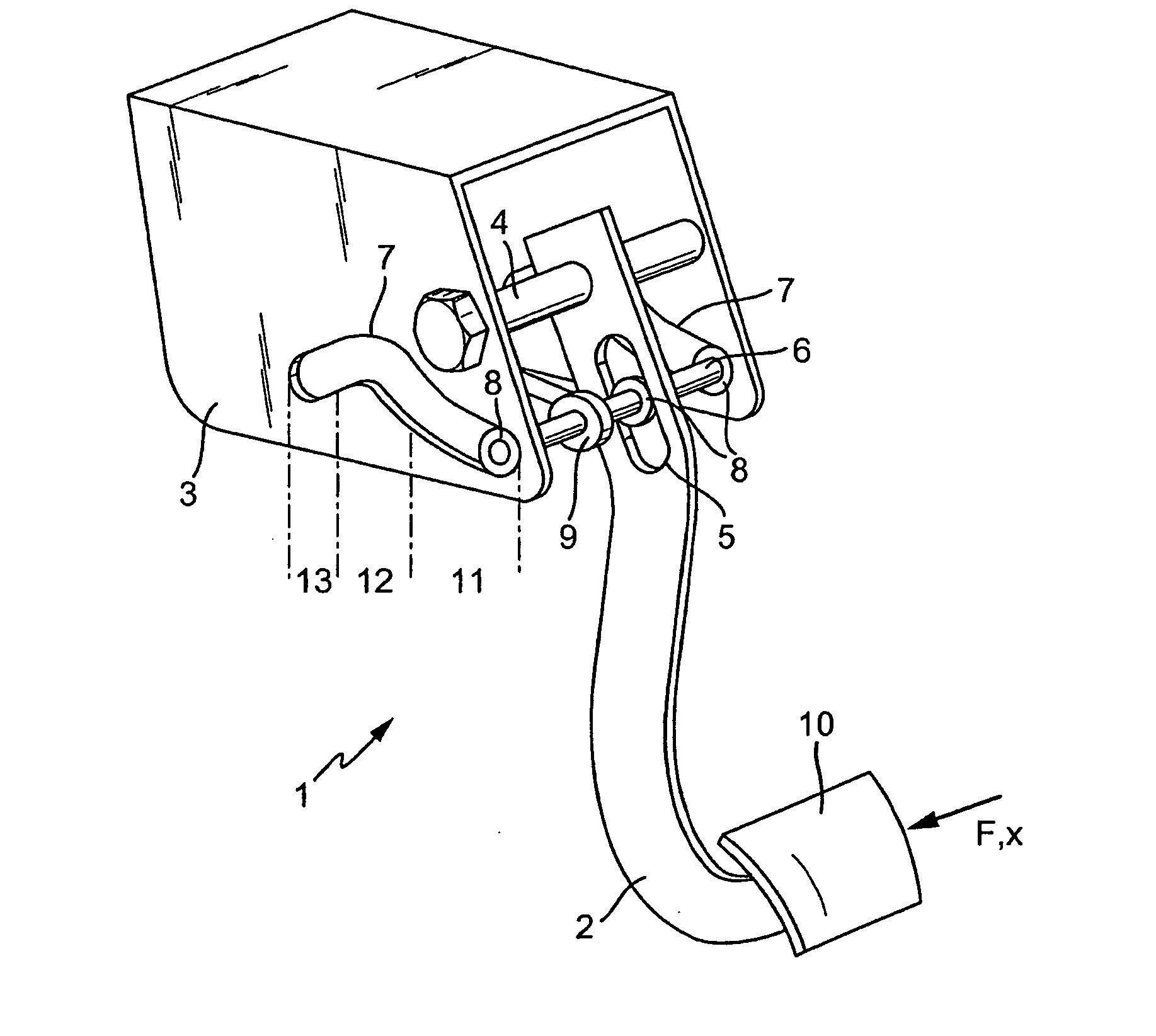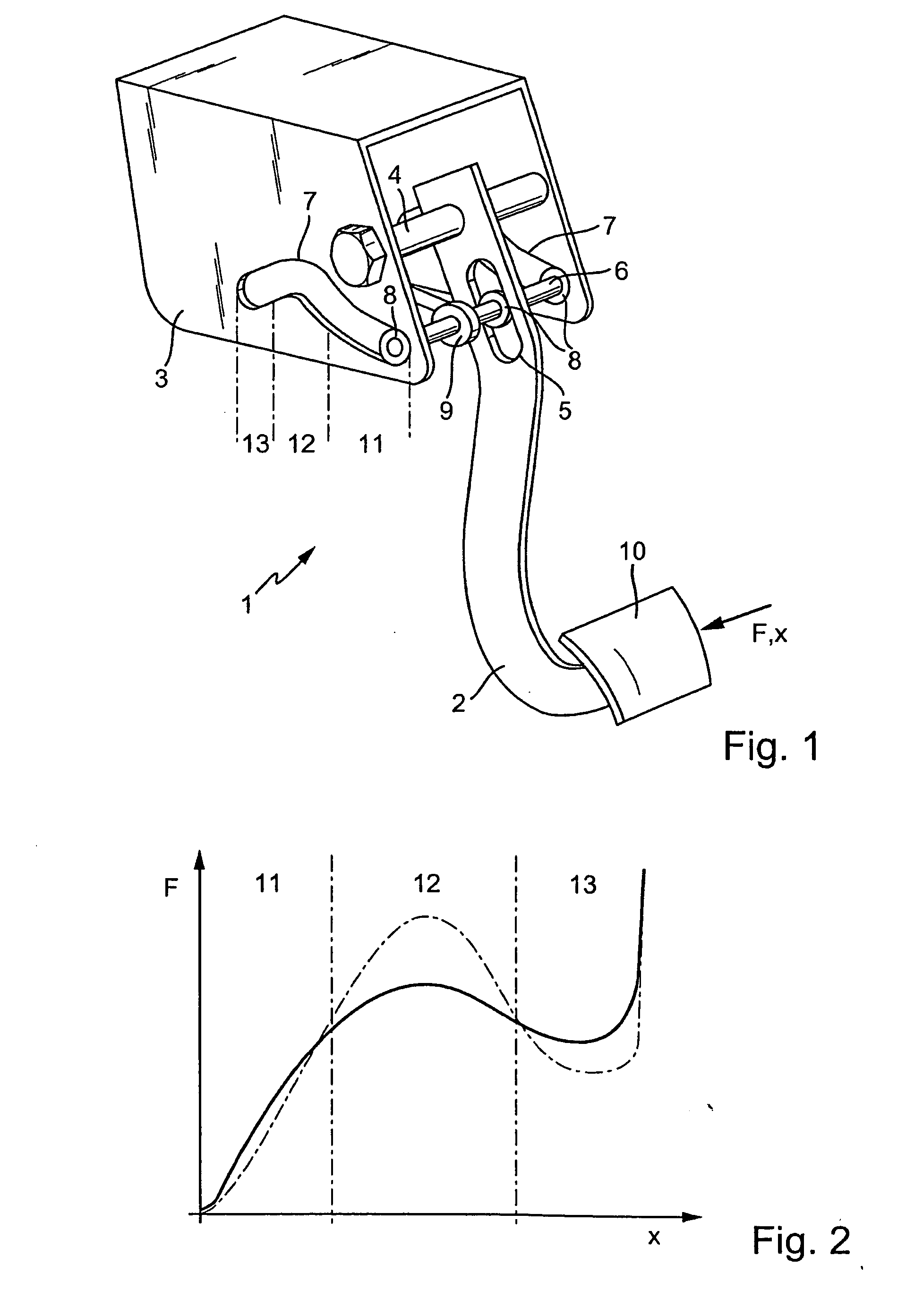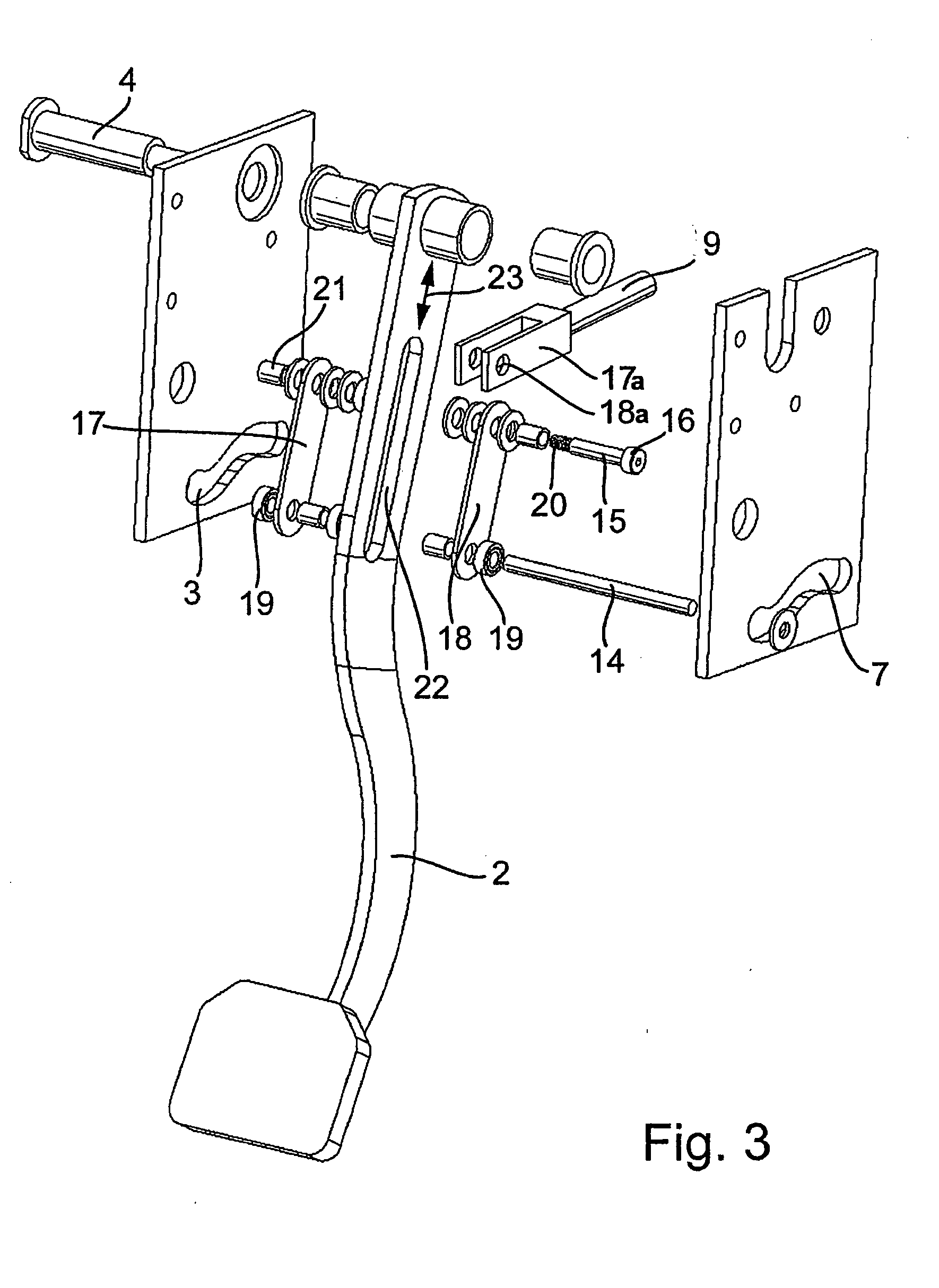Pedal arrangement for operating a clutch
a technology of a clutch and a pedal, which is applied in the direction of mechanical control devices, manual control with a single controlling member, instruments, etc., can solve the problems of non-linear force-displacement ratio, complex configuration of the art device intended to solve the problem, and the force needed to be applied to the pedal in order to operate the clutch, etc., to achieve simple mechanical configuration, simple and robust configuration, and comparatively simple mechanical configuration
- Summary
- Abstract
- Description
- Claims
- Application Information
AI Technical Summary
Benefits of technology
Problems solved by technology
Method used
Image
Examples
first embodiment
[0021]FIG. 1 shows a perspective view of a pedal arrangement 1 in accordance with the present invention. A pedal lever 2 is pivotably supported in a U-shaped support element 3 on a pivot axis 4 that is supported by two lateral arms of the support element 3. The pedal lever 2 is carried by the pivot axis 4. The pivot axis 4 thus forms a hinge for the pedal lever 2. The pedal lever 2 includes a slide bearing surface 5 that is configured as an elongated opening or slot. The slide bearing surface 5 is oriented in a radial direction relative to the pivot axis 4.
[0022]An operating member 6 in the form of a pin is rotatably carried in the slide bearing surface or slot 5. The operating member 6 is also supported in two opposed grooves 7 that are formed in respective lateral arms of the support element 3. The support of the operating member 6 in the slide bearing surface or slot 5 and the in grooves 7 is effected by bearings 8. A push rod 9 is carried by the operating member 6, wherein the p...
second embodiment
[0028]FIG. 3 shows an exploded view of the present invention. In the embodiments shown in FIGS. 1 and 3 identical components are identified by the same reference numerals, and they are therefore not described again. In the embodiment in accordance with FIG. 3, the operating member is formed as two components and includes a first pin 14 and a second pin 15. The first pin 14 interacts with the groove 7, while the second pin 15 is used for connection with the push rod 9. The second pin 15 includes a pin head 16 and a threaded end 20, onto which a safety nut 21 is threaded. The pins 14 and 15 are connected by connecting links 17 and 18, which are disposed on respective opposite sides of the pedal lever 2. The push rod 9 is connected to the second pin 15 by a fork 17a. For that purpose, the fork 17a includes two arms that each includes a bore 18a through which the second pin 15 is inserted. The first pin 14 is provided with support rings 19 on both ends, which can be plastic rings, ball ...
PUM
 Login to View More
Login to View More Abstract
Description
Claims
Application Information
 Login to View More
Login to View More - R&D
- Intellectual Property
- Life Sciences
- Materials
- Tech Scout
- Unparalleled Data Quality
- Higher Quality Content
- 60% Fewer Hallucinations
Browse by: Latest US Patents, China's latest patents, Technical Efficacy Thesaurus, Application Domain, Technology Topic, Popular Technical Reports.
© 2025 PatSnap. All rights reserved.Legal|Privacy policy|Modern Slavery Act Transparency Statement|Sitemap|About US| Contact US: help@patsnap.com



